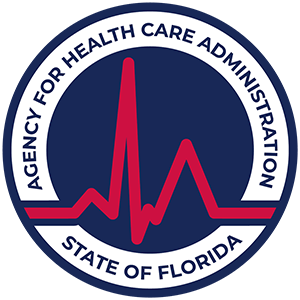Disturbing Alcohol Abuse Statistics & Facts
Unmasking shocking alcohol abuse statistics & facts, their impact on health, and effective intervention strategies.
Top 10 Key Alcohol Abuse Statistics & Facts
Here are the top 10 key statistics about alcohol abuse:
- Alcohol is responsible for approximately 95,000 deaths annually in the United States.
- Globally, alcohol misuse contributes to around 3 million deaths each year.
- Alcohol consumption is the second most detrimental risk factor for global burden of disease and injury.
- Alcohol use disorders (AUDs) rank as the fourth-most disabling disease category in low- to middle-income countries.
- Alcohol is a known risk factor for over 200 health conditions, including diseases and injuries.
- Men report more alcohol consumption and binge drinking than women.
- Young adults aged 18-25 are at high risk of alcohol use disorder and unintentional injury caused by drinking.
- Native Americans and Blacks are most vulnerable to alcohol-related health consequences.
- Alcohol consumption is a risk factor for more than 30 disease conditions, including infectious diseases, cancer, diabetes, and cardiovascular disease.
- Alcohol is associated with an increased risk of various types of cancer, including oral cavity, pharynx, liver, and breast cancer.
Understanding Alcohol Abuse
Alcohol abuse is a serious public health concern with far-reaching implications. This section will explore the impact of alcohol misuse and identify various risk factors for developing an alcohol use disorder.

Impact of Alcohol Misuse
Misuse of alcohol carries significant health, social, and economic consequences. Alcohol consumption is known to be a risk factor for over 200 health conditions, including diseases and injuries. It's a major contributor to the global burden of disease, causing or contributing to more than 30 disease conditions including infectious diseases, cancer, diabetes, neuropsychiatric diseases, cardiovascular disease, liver and pancreas disease, and unintentional and intentional injury. In fact, alcohol consumption is the second most detrimental risk factor for global burden of disease and injury, exceeded only by unsafe sex and childhood underweight status.
Evidence of the rising concern around alcohol misuse is reflected in the increased calls to SAMHSA's National Helpline. In 2020, the helpline received 833,598 calls, marking a 27 percent increase from the previous year when the Helpline received 656,953 calls in 2019.
Risk Factors for Alcohol Use Disorder
Certain populations face a higher risk of alcohol use disorder than others. Young adults ages 18-25 are at particularly high risk of alcohol use disorder and unintentional injury caused by drinking. Native Americans and Blacks are also most vulnerable to alcohol-related health consequences. Men report more alcohol consumption and binge drinking than women, especially in older cohorts.
Understanding these risk factors is crucial for developing effective prevention strategies and interventions. It also underscores the need for targeted public health campaigns to raise awareness and promote responsible drinking practices.
Alcohol Consumption Statistics
Understanding the impact of alcohol abuse requires a clear grasp of the consumption statistics. These figures help to illustrate the magnitude of the issue, shedding light on both global trends and gender disparities.
Global Alcohol Consumption Trends
Alcohol consumption varies significantly worldwide. According to Our World in Data, North Africa and the Middle East report lower levels of alcohol intake, whereas Europe presents higher levels.
Furthermore, around 1 percent of the global population grapples with an alcohol use disorder. However, the prevalence of this disorder ranges from 0.5 to 5 percent across countries, highlighting the uneven distribution. It's noteworthy that alcohol consumption is the second most detrimental risk factor for the global burden of disease and injury, exceeding only by unsafe sex and childhood underweight status, as per NCBI.
Alcohol Consumption Disparities by Gender
When analyzing alcohol consumption by gender, men consistently report higher levels than women in all countries. This disparity underscores the need for gender-specific intervention strategies and awareness campaigns.
Alcohol Use Disorders (AUDs) are also highly disabling, ranking as the fourth-most disabling disease category in low- to middle-income countries and the third-most in high-income countries.
These alcohol abuse statistics & facts underline the urgent need for effective interventions and policies to curb alcohol misuse on a global scale. The next sections will delve into the health effects of alcohol abuse, alcohol-related diseases, alcohol-related mortality, and intervention strategies.
Health Effects of Alcohol Abuse
When discussing alcohol abuse statistics & facts, it is essential to shed light on the health effects of alcohol misuse. The consequences of heavy drinking can be devastating, affecting both physical and mental health.
Physical Consequences of Heavy Drinking
Heavy alcohol consumption can result in severe physical health consequences. One of the most affected organs is the liver. Long-term heavy use of alcohol can lead to liver damage, including cirrhosis and alcoholic fatty liver disease. Alcohol is toxic to the liver, and excessive consumption can result in harm to liver cells [5].
The cardiovascular system is also severely impacted by heavy drinking. There's an increased risk of heart disease, with studies showing that heavy drinkers are more likely to have trouble pumping blood to their heart and have a higher chance of dying from heart disease.
There is a clear link between heavy alcohol use and several types of cancers, including mouth, throat, liver, breast, and intestinal cancers. Heavy drinking facilitates the entry of cancer-causing chemicals into cells more easily.
Alcohol consumption is a known risk factor for more than 200 health conditions, including diseases and injuries [1]. It's also a major contributor to the global burden of disease, causing or contributing to more than 30 disease conditions including infectious diseases, cancer, diabetes, and cardiovascular disease.
Mental Health Implications
Alcohol misuse also has severe implications for mental health. Alcohol abuse can lead to brain and nervous system problems, affecting communication pathways in the brain and causing difficulties in thinking clearly, making decisions, and moving the body. Heavy drinking can result in mental health issues like depression and dementia [5].
Alcohol use disorders (AUDs) are the fourth-most disabling disease category in low- to middle-income countries and the third-most disabling disease category in high-income countries.
In summary, the health effects of alcohol abuse are extensive and severe, impacting virtually every system in the body. Understanding these effects is crucial for informing public health measures and interventions aimed at reducing the burden of alcohol abuse.
Alcohol-Related Diseases
Deepening our understanding of the various health implications of alcohol abuse is integral to spreading awareness about this issue. This section focuses on the correlation between alcohol consumption and an increased risk of certain diseases, particularly cancer and cardiovascular conditions.
Cancer and Alcohol Consumption
Alcohol consumption has been definitively linked to an increased risk of various types of cancer. According to the National Toxicology Program of the US Department of Health and Human Services, alcohol drinking is listed as a known human carcinogen. The consensus within the scientific community is strong; alcohol can cause several types of cancer [6].
Based on data from 2009, an estimated 3.5% of cancer deaths in the United States were alcohol-related. Even moderate alcohol consumption can increase the risk of developing alcohol-associated cancer.
The types of cancer causally linked to alcohol consumption include:
- Oral cavity
- Pharynx
- Larynx
- Esophagus
- Liver
- Colorectum
- Female breast
These alarming facts highlight the strong connection between alcohol consumption and cancer [2].
Cardiovascular Effects of Alcohol
Alcohol abuse doesn't just increase the risk of cancer; it also has severe implications for the cardiovascular system. Heavy drinking is associated with an elevated risk of heart disease. Studies indicate that heavy drinkers are more likely to have trouble pumping blood to their heart and have a higher chance of dying from heart disease.
Long-term heavy use of alcohol can also lead to liver damage, including conditions like cirrhosis and alcoholic fatty liver disease. As alcohol is toxic to the liver, excessive consumption can result in harm to liver cells, further complicating the cardiovascular health of an individual.
These sobering alcohol abuse statistics & facts underscore the need for increased awareness about the devastating health effects of excessive alcohol consumption. By understanding the potential risks, individuals can make more informed decisions about their drinking habits.
Alcohol-Related Mortality
The repercussions of alcohol misuse are profound, impacting individuals and societies on numerous levels. A significant part of the alcohol abuse statistics & facts includes alcohol-related mortality rates, which offer a sobering perspective on the human cost of alcohol misuse.
Deaths and Disability due to Alcohol Misuse
In the United States alone, alcohol is responsible for approximately 95,000 deaths annually, making it the third leading preventable cause of death in the country. The situation is equally troubling on a global scale, with alcohol misuse contributing to around 3 million deaths each year and 132.6 million disability-adjusted life years (DALYs).
It is worth noting that alcohol consumption is the second most detrimental risk factor for global burden of disease and injury, exceeded only by unsafe sex and childhood underweight status [2].
Alcohol-Attributable Conditions
Alcohol misuse fuels a broad spectrum of health conditions. It significantly contributes to the global burden of disease, causing or contributing to over 30 disease conditions, including infectious diseases, cancer, diabetes, neuropsychiatric diseases, cardiovascular disease, liver and pancreas disease, and unintentional and intentional injury.
Alcohol use disorders (AUDs) are particularly disabling. They rank as the fourth-most disabling disease category in low- to middle-income countries and the third-most disabling disease category in high-income countries [2].
The alarming statistics of alcohol-related mortality underscore the urgency of effective intervention strategies. It is crucial to address the root causes of alcohol misuse and implement measures that can mitigate the devastating toll it takes on individuals, families, and communities.
Intervention Strategies
Addressing the alarming trends in alcohol abuse statistics & facts, intervention strategies play a crucial role in mitigating the harmful effects of alcohol misuse. These strategies encompass a variety of approaches tailored to the needs of different groups. They aim to help individuals understand the negative impact of their drinking on their lives and encourage them to seek treatment, with the ultimate goal of helping them reclaim their health, relationships, and future.
Effective Alcohol Abuse Interventions
Interventions for alcohol abuse have demonstrated effectiveness, with approximately 70% of individuals who participated in an intervention program in Canada reporting significant reductions in alcohol consumption. This study conducted by the Canadian Centre on Substance Use and Addiction underscores the potential impact of intervention strategies in mitigating alcohol misuse.
While these interventions vary, they generally focus on educating individuals about the dangers of excessive alcohol consumption, challenging their beliefs about alcohol, and providing them with tools and strategies to reduce or abstain from drinking.
Intervention Strategies for Different Groups
Effective intervention strategies are often tailored to the needs of specific groups. For instance:
Adolescents: For this group, educating them about the dangers of alcohol, encouraging positive activities, and implementing evidence-based interventions like Cognitive Behavioral Therapy (CBT), family-based interventions, and brief motivational interventions are effective.
Individuals with Fetal Alcohol Syndrome (FAS): Alcohol intervention strategies may include educational support, counselling, therapy, nutritional interventions, medications, and support groups to address the physical, cognitive, and emotional challenges associated with FAS.
Families dealing with alcohol problems: Family therapy, education, training, and community support are essential components of effective intervention strategies. They provide resources and tools to help loved ones overcome addiction and improve their quality of life.
By understanding and implementing these alcohol intervention strategies, communities can help individuals and families affected by alcohol misuse to improve their health, restore their relationships, and rebuild their lives. It's a critical step to reverse the disturbing trends in alcohol abuse statistics & facts.














.svg)








